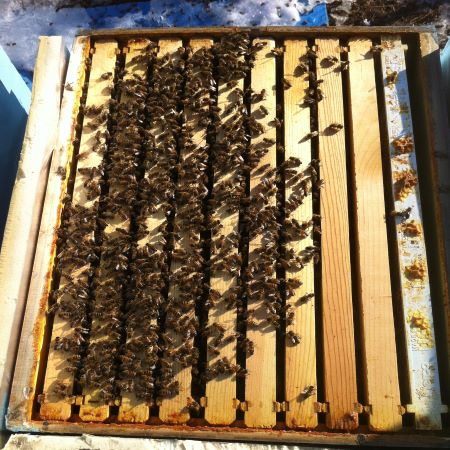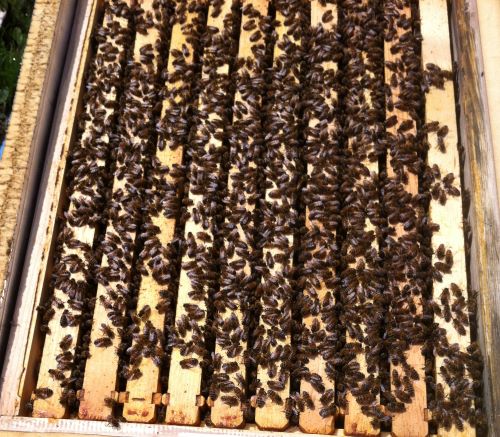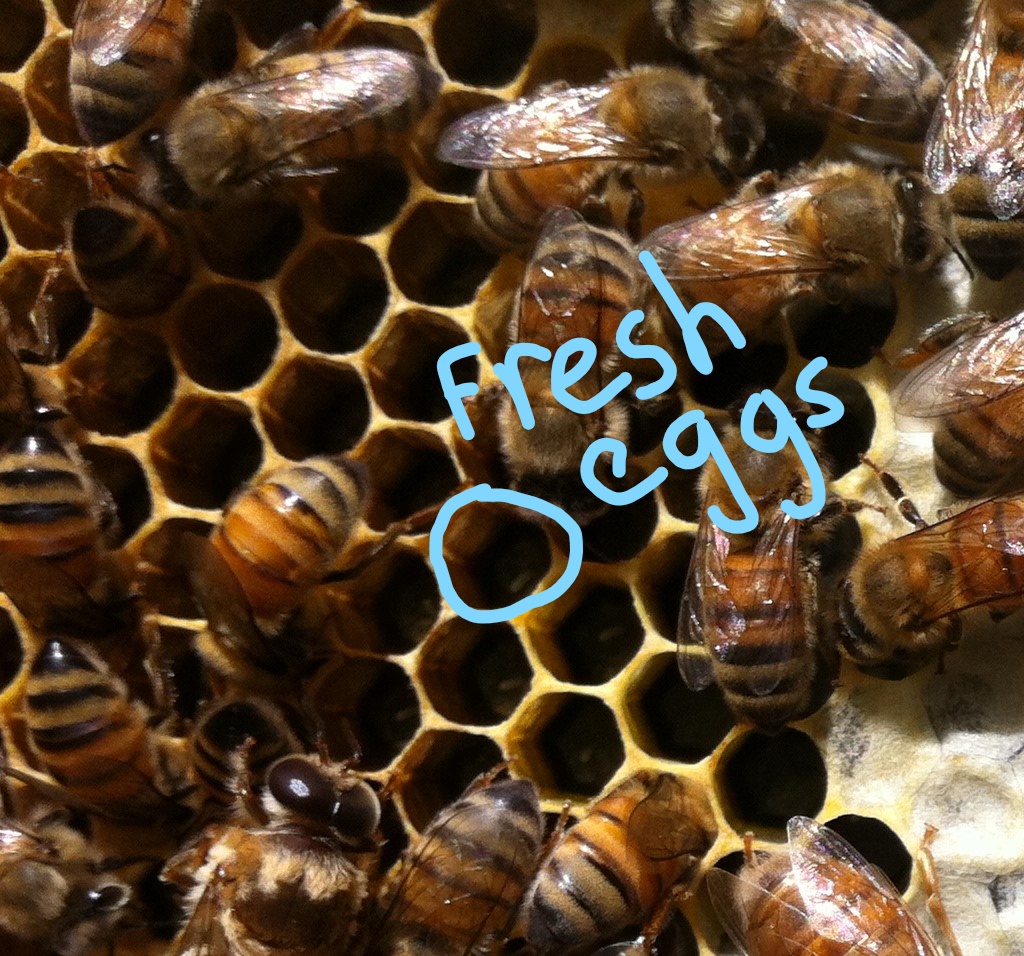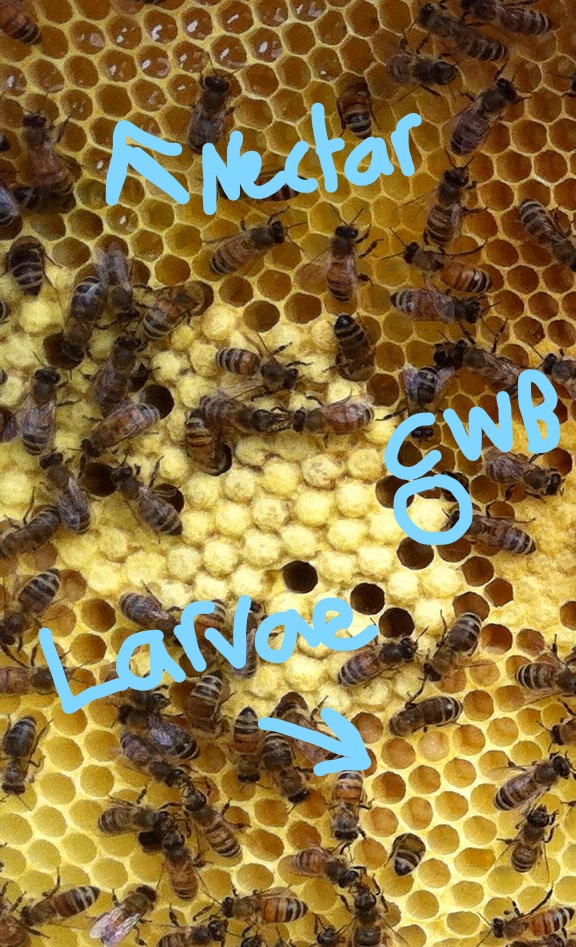
A Challenge: getting into your hive enough, and getting enough from being IN your hive
Without the information about what's on the frames, you will not be able to manage the bees effectively. You need to dive in.
With the information on the frames, you'll know the right time to add a box, harvest honey, or ask a pro for help
because there is a serious problem.
There are 2 parts to getting necessary information from the hive:
1. Getting into the hive enough.
2. Getting the right info from your hive.
1. Keys to getting into your hive enough
- Have the right gloves for you. If you're ready for no gloves, super! If not, try my favorites- 8 mil nitrile. Do not buy unless 4 mil or thicker, or if mils not listed. If you are more comfortable with the goat-skin leather gloves, then do that. Use a frame grabber with those gloves.
- Protect your wrists by pulling the gloves over your suit's wrist cuffs.
- If it is hard to see details in the hive... it might not be you, it might be the veil. Try a different style of veil. The type of mesh used can make a big difference in visibility of tiny things like eggs. Or... use your phone to snap a pic, then zoom in!!
- If you're too hot or feel cramped... You might consider investing in a different veil/jacket. On hot days, I actually soak my jacket in water to keep cool! I also love my vented jacket, so worth it.
- Know how to move. I move at bee-walking-speed, like I'm under water, when I am reaching for frames or moving them. No flailing, no thumping, no scraping.
- Know what you're looking for. A checklist or record sheet is a reminder of what to look for (and note) while you are in the moment. Inspecting a hive is so multi-sensory that it is hard to pull back and look at the big picture. Example sheets to follow.
- Just spend time out there! Even if you are progressing little-by-little during each visit, and opening just the lid and inner cover, then next visit moving an undrawn frame out, and then moving 2 frames... it will get you used to working with the bees. Be sure to take time to watch them at the entrance - be polite and stand next to the front door, and not in their flyway.
2. Getting the right info from your hive.
To get information from the hive, you need to feel comfortable manipulating frames. See
First Inspections page for technique tips.
Next, you need to write down what you see. There are a lot of ways to approach this, but I don't recommend the diary format.
Instead, try a sheet that has blanks for the information you need to get from the frames - like the sheet below.

Section I: Mission.
- Know Your Mission: Queen Check
- To confirm the queen is OK, you want to see evidence of her handiwork: eggs and larvae.
- DO NOT LOOK FOR THE QUEEN. But do act like she is on any frame you are moving, so no crushing or rolling bees against each other.
- In a hive that is drawing new comb, the eggs and larvae are often near the newest frames.
- Know what queen cells look like, and note the date you see one, whether it is a play cup, charged or capped, and check out my A queen cell! Now what? page.
- Know Your Mission: Supporting Comb Construction
- Plan on feeding 8 quarts a week, 2 parts sugar to 1 part water, by weight or volume. You'll be feeding more than once a week.
- Plan on moving 1 undrawn frame from the outer regions inward about every 7-10 days.
- Do this frame swap until you're down to the last 2 frames to get drawn out. Then it's time to add another box.
Know your mission, helps you know what you'll want to write down!
Section II: Entrance.
Pollen collection is stimulated by the presence of larvae that need fed.
This usually means a queen is laying, but it can mean the queen is laying drones,
or that the worker bees are now laying drones as so-called laying workers. Gotta open the hive to be sure!
The bees can collect a day's worth of pollen in an hour or so. When they are collecting like they mean it,
about 50% will have pollen in their pollen baskets. Best time to see pollen collecting is when the dew has dried, but it's early in the day,
and especially after a prior day where the bees could not get out.
On a nice day, a strong hive will send out more foragers than a weak hive. The bees collect nectar, and propolis and water too. It's fascinating to watch.

Section III: Frames covered with bees.
When you first get your baby hive, the bees will cover about 5-6 frames. Each frame of capped brood that emerges will add 2 frames of bees to the hive. If you're at 9 frames covered with bees, and a lot of capped brood is about to emerge... this is going to be too many bees!!!!
About 5 frames covered with bees

About 10 frames covered with bees

Section IV: The frames.
To identify what's on a frame:
1. Finding Eggs: Find a frame with drawn comb, but NO CLEAR SHINY LIQUID in the middle.
Stand with the frame held over the hive, but the sun or most light coming from
behind you. If there's eggs, you'll see 'em.
2. Finding Larvae: Look next to capped brood (CWB below), and look for milky liquid in the cells.
3. Finding capped brood: AKA CWB for capped worker brood. It is in the middle of the frame, with a solid not translucent capping, that looks like toffee.
4. Finding Nectar: It's clear and shiny, fills cells to the top, and is either at the top of the frame, or fills the whole frame.
Notice I didn't mention honey. It will be found where nectar was, later in the summer. Initially the bees are pretty focused on construction, rather than on savings.

